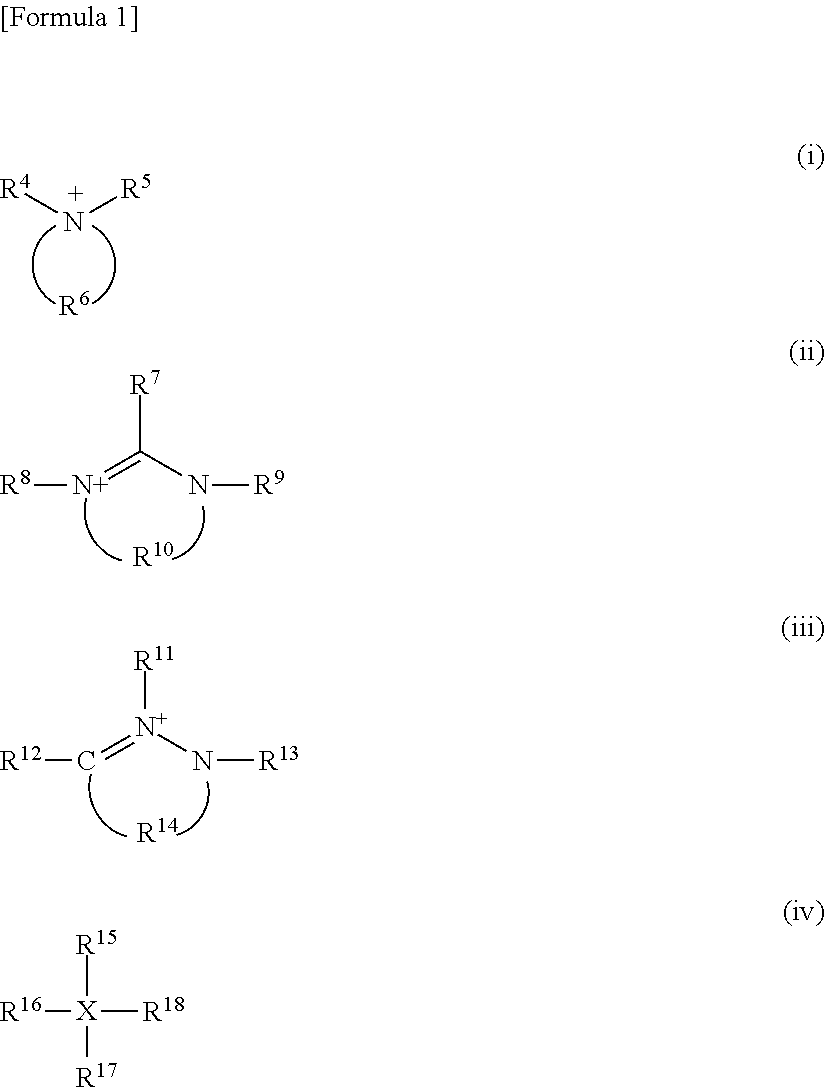Adhesive composition for an optical film
a technology of adhesive composition and optical film, applied in the direction of film/foil adhesive, instruments, transportation and packaging, etc., can solve the problems of reducing productivity, affecting the adhesion of the adhesive composition, etc., to achieve excellent adhesion properties, excellent reworking properties, excellent adhesion properties, and excellent storage stability of the adhesive composition
- Summary
- Abstract
- Description
- Claims
- Application Information
AI Technical Summary
Benefits of technology
Problems solved by technology
Method used
Image
Examples
synthesis example 1
Synthesis of Acrylic Triblock Copolymer (Ia)
[0192](1) A 2 L three-necked flask was provided with a three-way cock, and then the contents of the flask were purged with nitrogen. Then, at room temperature, the flask was charged with 868 g of toluene, 43.4 g of 1,2-dimethoxyethane, and 60.0 g of a toluene solution which contained 40.2 mmol of isobutyl bis(2,6-di-t-butyl-4-methylphenoxy)aluminum. The flask was further charged with 3.68 g of a cyclohexane / n-hexane mixed solution containing 6.37 mmol of sec-butyllithium, and then charged with 49.9 g of methyl methacrylate. The reaction solution was yellow at first and became colorless after being stirred for 60 minutes at room temperature. The methyl methacrylate polymerization conversion rate at this stage was 99.9% or more. The internal temperature of the polymer solution was cooled to −30° C., and 212 g of n-butyl acrylate was added dropwise over 2 hours. After the completion of the dropwise addition, the mixture was stirred at −30° C....
synthesis example 2
Synthesis of Acrylic Triblock Copolymer (Ib)
[0193](1) A 2 L three-necked flask was provided with a three-way cock, and then the contents of the flask were purged with nitrogen. Then, at room temperature, the flask was charged with 868 g of toluene, 43.4 g of 1,2-dimethoxyethane, and 60.0 g of a toluene solution which contained 40.2 mmol of isobutyl bis(2,6-di-t-butyl-4-methylphenoxy)aluminum. The flask was further charged with 2.07 g of a cyclohexane / n-hexane mixed solution containing 3.54 mmol of sec-butyllithium, and then charged with 36.6 g of methyl methacrylate. The reaction solution was yellow at first and became colorless after being stirred for 60 minutes at room temperature. The methyl methacrylate polymerization conversion rate at this stage was 99.9% or more. The internal temperature of the polymer solution was cooled to −30° C., and 251.9 g of n-butyl acrylate was added dropwise over 2 hours. After the completion of the dropwise addition, the mixture was stirred at −30° ...
synthesis example 3
Synthesis of Acrylic Triblock Copolymer (Ic)
[0194](1) A 2 L three-necked flask was provided with a three-way cock, and then the contents of the flask were purged with nitrogen. Then, at room temperature, the flask was charged with 868 g of toluene, 43.4 g of 1,2-dimethoxyethane, and 60.0 g of a toluene solution which contained 40.2 mmol of isobutyl bis(2,6-di-t-butyl-4-methylphenoxy)aluminum. The flask was further charged with 3.03 g of a cyclohexane / n-hexane mixed solution containing 5.17 mmol of sec-butyllithium, and then charged with 79.9 g of methyl methacrylate. The reaction solution was yellow at first and became colorless after being stirred for 60 minutes at room temperature. The methyl methacrylate polymerization conversion rate at this stage was 99.9% or more. The internal temperature of the polymer solution was cooled to −30° C., and 155.3 g of n-butyl acrylate was added dropwise over 2 hours. After the completion of the dropwise addition, the mixture was stirred at −30° ...
PUM
| Property | Measurement | Unit |
|---|---|---|
| Percent by mass | aaaaa | aaaaa |
| Percent by mass | aaaaa | aaaaa |
| Percent by mass | aaaaa | aaaaa |
Abstract
Description
Claims
Application Information
 Login to View More
Login to View More - R&D
- Intellectual Property
- Life Sciences
- Materials
- Tech Scout
- Unparalleled Data Quality
- Higher Quality Content
- 60% Fewer Hallucinations
Browse by: Latest US Patents, China's latest patents, Technical Efficacy Thesaurus, Application Domain, Technology Topic, Popular Technical Reports.
© 2025 PatSnap. All rights reserved.Legal|Privacy policy|Modern Slavery Act Transparency Statement|Sitemap|About US| Contact US: help@patsnap.com

